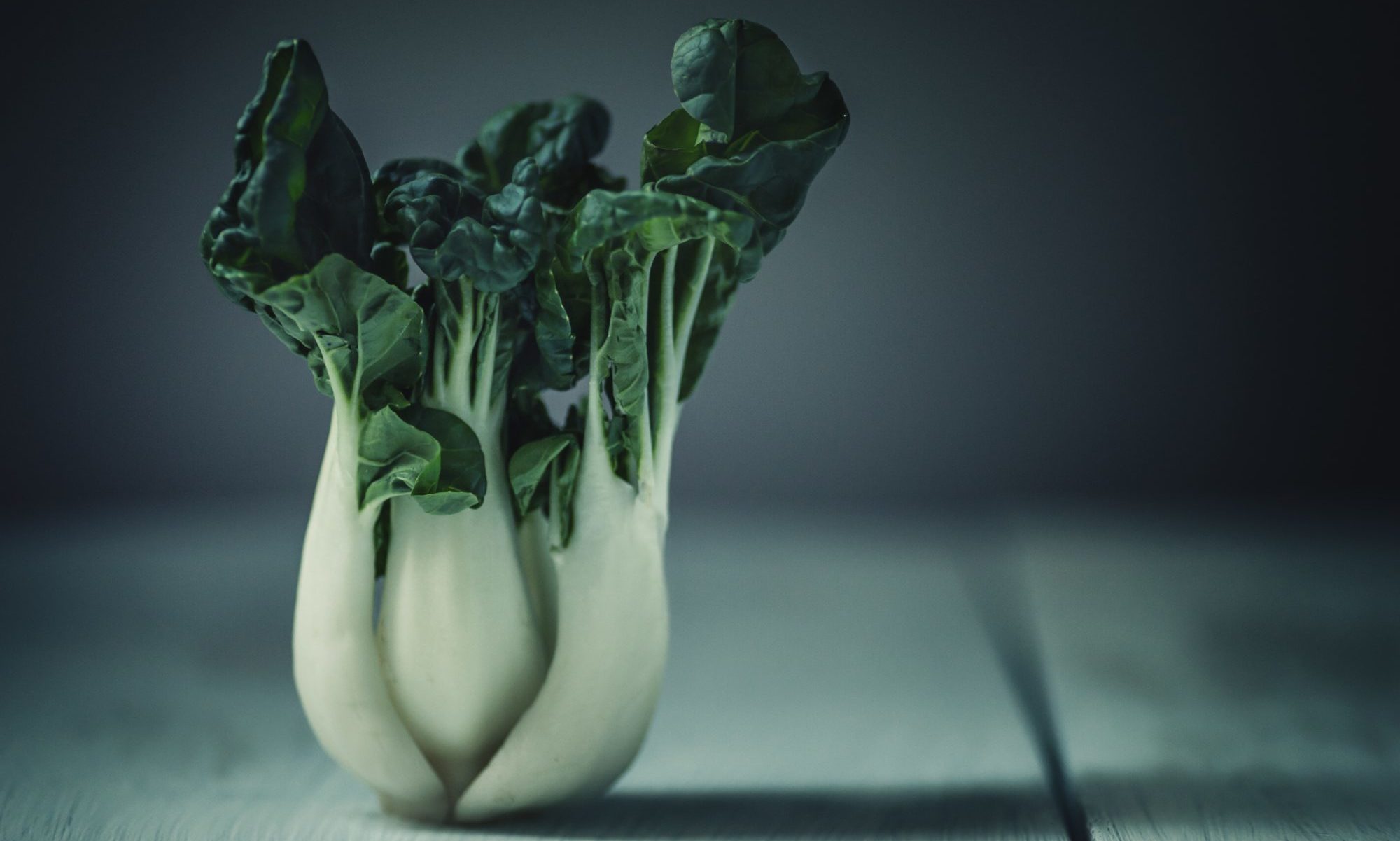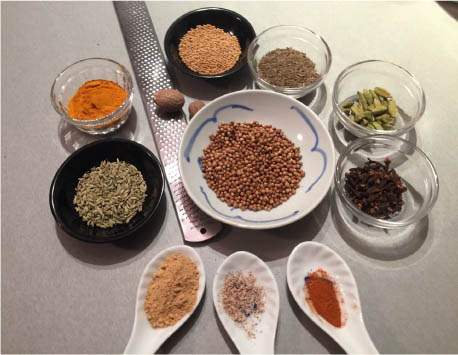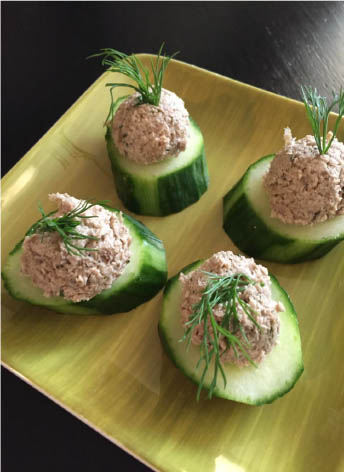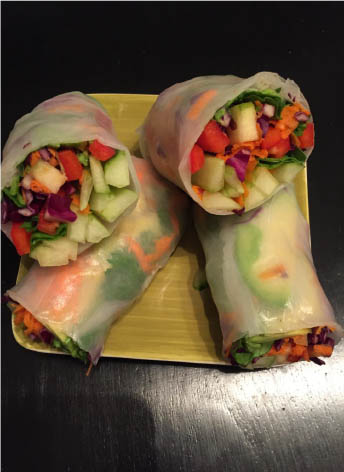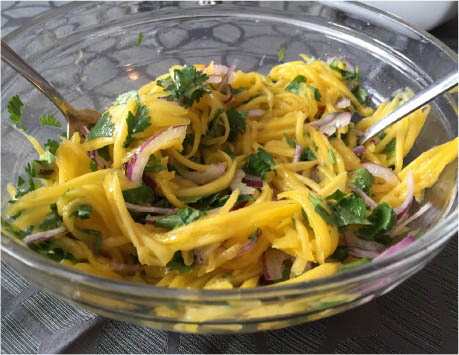There is truth to the expression that “We eat with our eyes” – there is no denying that food which is visually appealing is more appetizing. We start salivating as soon as we see and smell the food.
Having colourful, whole foods on your plate is not only appetizing but also nutritionally beneficial as colourful foods contain many beneficial nutrients. It is important to include many colours of the rainbow in our diet as the colors on your plate can provide a wide variety of vitamins, minerals and antioxidants.
Here are some of the benefits of different colored foods …
Red – contains lycopene (powerful antioxidant) that may help improve heart and blood health, and can support healthy joints
Orange – contains flavonoids, potassium, vitamin C, vitamin A that may help prevent cancer and promote collagen production
Yellow – contains antioxidants, vitamin C that may benefit your heart, vision, digestive and immune systems
Green – contains most essential nutrients: calcium, magnesium, potassium, and vitamins B, C, E, K that may aid detoxification, fight free radicals and improve immune function
Blue/Purple – contains anthocyanins that may help reduce risk of high blood pressure and soothe inflammation
White – contains anthoxanthins that may help lower cholesterol, improve immunity, and reduce cancer risk
Here is example of colorful meal that I recently prepared for a dinner party with close friends. The theme was Thai foods ….
Appetizer – Veggie rice rolls with almond butter dipping sauce
Colorful veggies in rolls include red pepper, cucumber, apple, red cabbage, orange pepper, shredded carrot, coriander, Thai basil and broccoli sprouts
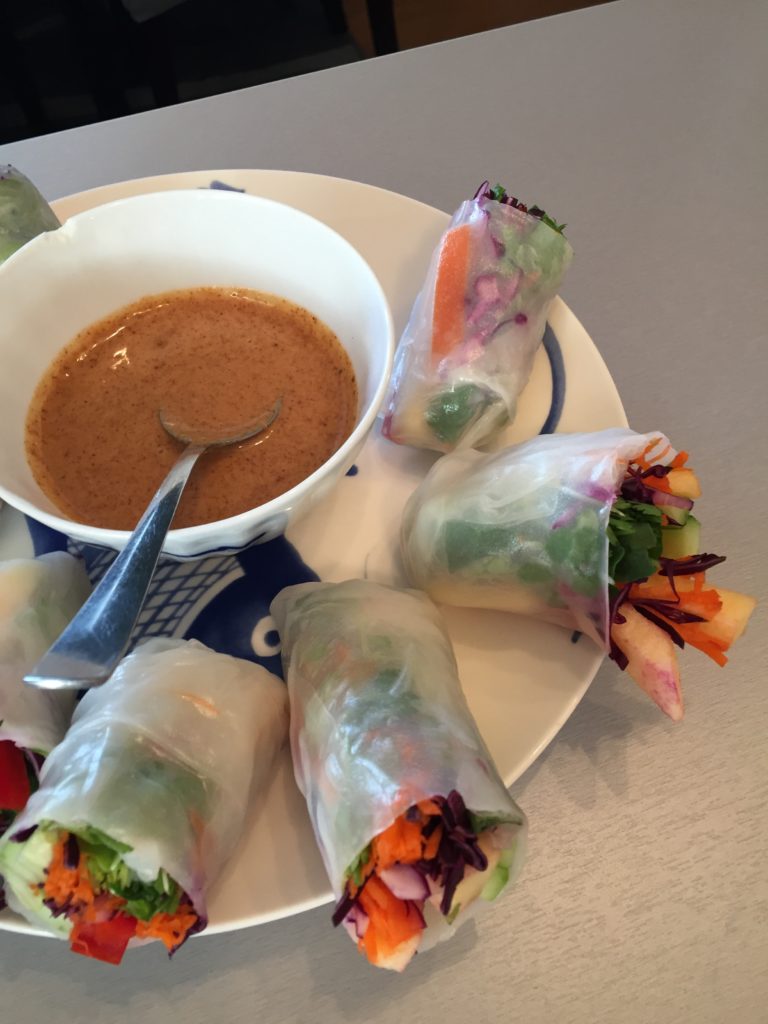
Salads
Cucumber salad with red onion and red pepper flakes
Mango salad with red onion and green coriander
Mung bean salad with julienned carrot, purple cabbage, red pepper, yellow pepper and topped with green herbs – coriander, mint and green onion
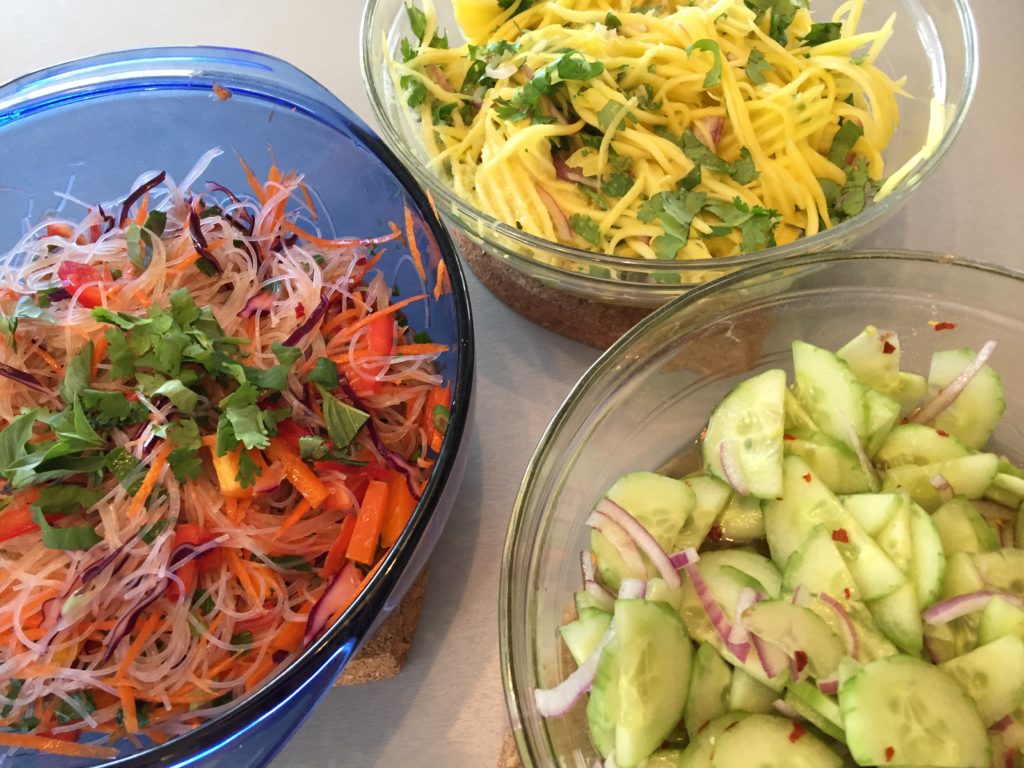
Thai coconut curries full of vegetables (red, orange, and yellow peppers, green beans, snap peas, potatoes, broccoli, carrot, yellow and green zucchini):
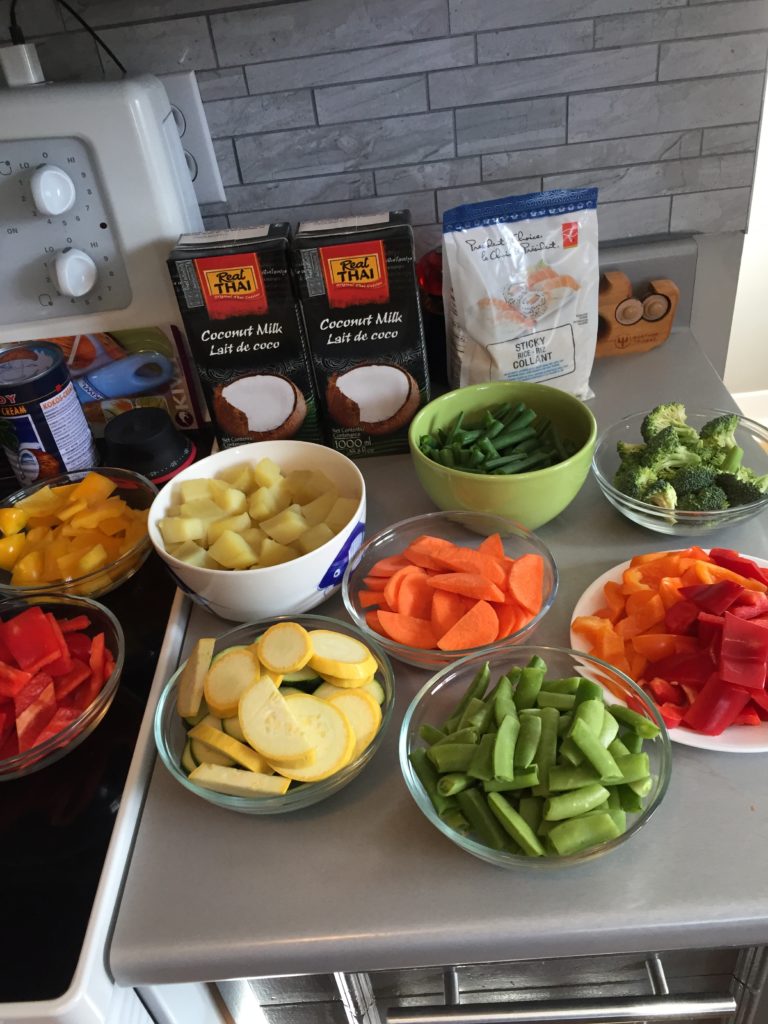
Red coconut curry, Green coconut curry, and yellow coconut curry all topped with Thai basil and coriander.
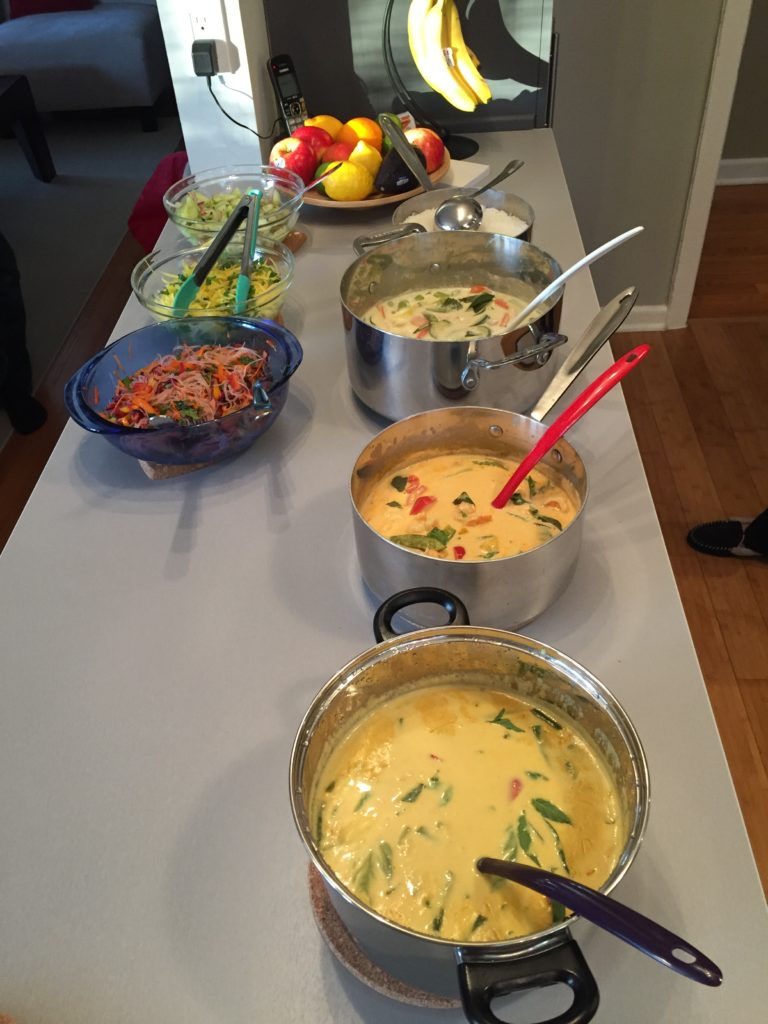
Desert
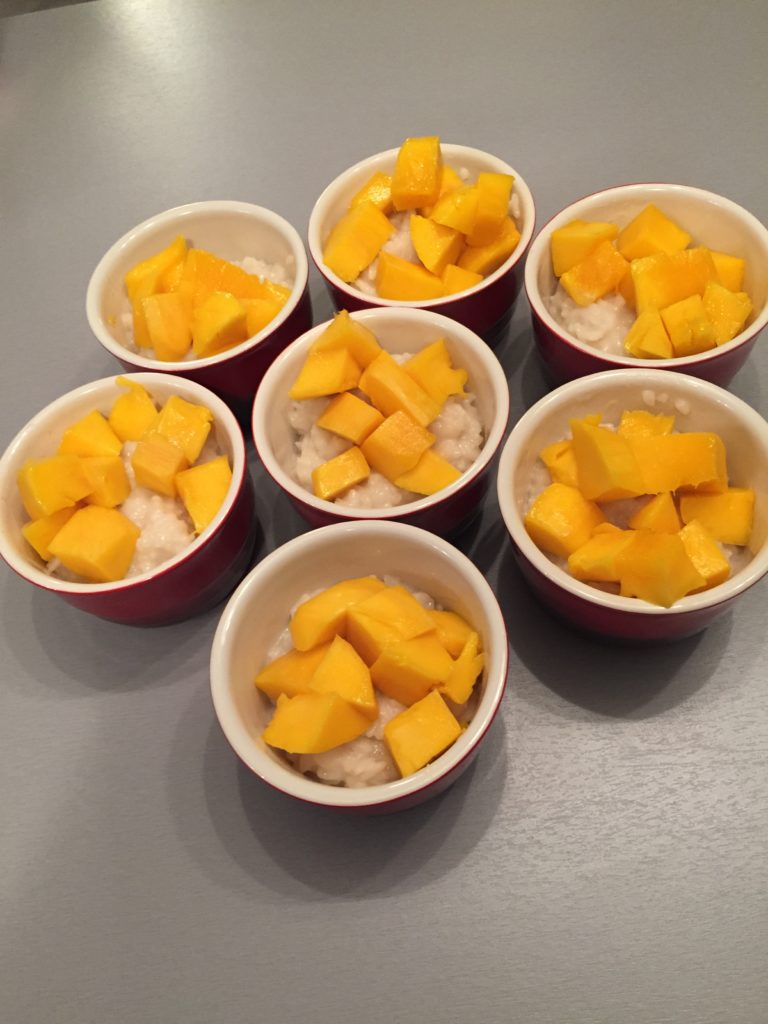
Eating healthy can be as easy as choosing foods from the colours of the rainbow.
